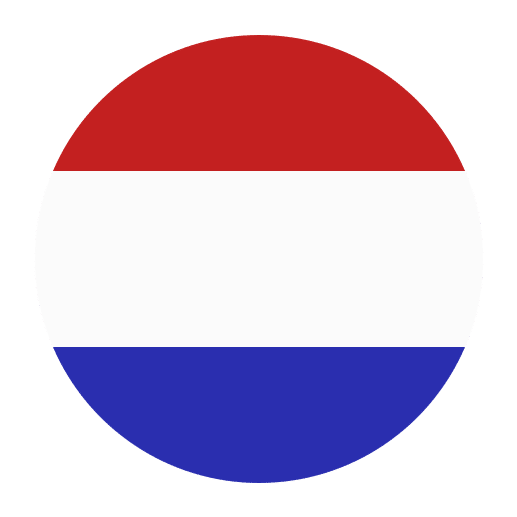The Dutch language, known as Nederlands in its native tongue, holds a unique position in the linguistic landscape of Europe. With its rich history, intricate phonetics, and diverse vocabulary, understanding Dutch offers a fascinating journey into the culture and history of the Netherlands and its people. This article delves into the history of the Dutch language, exploring how historical events, cultural shifts, and external influences have shaped it over the centuries.
Origins and Early History
The roots of the Dutch language can be traced back to the early Germanic tribes that inhabited the regions of what is now the Netherlands, Belgium, and parts of Germany. The language spoken by these tribes is known as Proto-Germanic, which eventually branched out into various Germanic languages, including Old Dutch.
Old Dutch (500 – 1150 AD)
Old Dutch, also known as Old Low Franconian, emerged around the 6th century. It was primarily spoken by the Franks, a Germanic tribe that played a crucial role in the early history of the Netherlands. Old Dutch is considered the earliest form of the Dutch language, though written records from this period are scarce. The language was predominantly oral, used in everyday communication and passed down through generations.
One of the few surviving texts from the Old Dutch period is the “Wachtendonck Psalms,” a collection of Biblical psalms translated into Old Dutch. This text provides valuable insights into the vocabulary and syntax of the language during this time.
Middle Dutch (1150 – 1500 AD)
As the medieval period progressed, Old Dutch gradually evolved into Middle Dutch. This period saw significant changes in the language, driven by social, political, and cultural developments. The feudal system, the rise of towns and trade, and the influence of neighboring languages all contributed to the evolution of Middle Dutch.
Influence of Trade and Commerce
The Netherlands’ strategic location on the North Sea made it a hub for trade and commerce during the medieval period. Merchants from different regions came into contact with the Dutch-speaking population, leading to the exchange of goods, ideas, and words. This interaction enriched the Dutch vocabulary, incorporating terms from French, Latin, and other languages.
Literary Achievements
The Middle Dutch period also witnessed a flourishing of literature and poetry. Notable works from this time include “Van den vos Reynaerde” (Reynard the Fox), a satirical epic that remains a classic in Dutch literature. These literary achievements not only reflect the linguistic richness of Middle Dutch but also provide a window into the society and culture of the time.
Early Modern Dutch (1500 – 1700 AD)
The transition from Middle Dutch to Early Modern Dutch was marked by the Renaissance and the Protestant Reformation, both of which had profound effects on the language. The invention of the printing press in the 15th century also played a significant role in standardizing Dutch.
The Renaissance Influence
The Renaissance brought a renewed interest in classical learning and the arts, influencing the Dutch language by introducing new vocabulary and ideas. Latin, the language of scholarship, left a lasting impact on Dutch, especially in academic and scientific contexts.
The Reformation and Religious Texts
The Protestant Reformation, led by figures like Martin Luther, emphasized the importance of translating religious texts into vernacular languages. In the Netherlands, this movement resulted in the translation of the Bible into Dutch. The Statenvertaling (States Bible), published in 1637, was a landmark in the history of the Dutch language. It not only made religious texts accessible to the general population but also contributed to the standardization of Dutch grammar and spelling.
The Golden Age of Dutch
The 17th century is often referred to as the Golden Age of Dutch culture, marked by advancements in art, science, and trade. During this period, Dutch became the language of diplomacy and commerce, further solidifying its status as a major European language. The works of renowned painters like Rembrandt and Vermeer, along with the scientific contributions of figures like Christiaan Huygens, highlight the cultural and intellectual vibrancy of the Dutch Golden Age.
Modern Dutch (1700 – Present)
The transition to Modern Dutch involved further standardization and adaptation to changing social and political contexts. The Netherlands’ colonial activities, particularly in Indonesia, Suriname, and the Caribbean, also influenced the language by incorporating loanwords and expressions from various regions.
Standardization and Regulation
The 19th and 20th centuries saw concerted efforts to standardize the Dutch language. The establishment of the Nederlandse Taalunie (Dutch Language Union) in 1980 by the Netherlands and Belgium was a significant step towards regulating and promoting Dutch. This organization works to ensure the consistency and development of the language across different regions and countries where Dutch is spoken.
Influence of Globalization
In the modern era, globalization has had a considerable impact on the Dutch language. English, as the dominant global language, has introduced numerous loanwords into Dutch, particularly in fields like technology, business, and entertainment. Despite these influences, Dutch has maintained its unique identity and continues to evolve, reflecting the dynamic nature of language in a globalized world.
Dialectal Diversity
One of the fascinating aspects of the Dutch language is its dialectal diversity. While Standard Dutch (Algemeen Nederlands) is the official language used in education, media, and government, various regional dialects thrive across the Netherlands and Belgium.
Regional Dialects
From the coastal regions of Zeeland to the Limburgish-speaking areas in the south, Dutch dialects exhibit significant variations in pronunciation, vocabulary, and grammar. These dialects are often deeply rooted in local history and culture, offering a rich tapestry of linguistic diversity.
Frisian: A Sister Language
In the northern province of Friesland, Frisian is spoken alongside Dutch. Frisian is a West Germanic language closely related to English and Dutch. It holds official status in the Netherlands and is taught in schools in Friesland. The coexistence of Dutch and Frisian in this region highlights the multilingual nature of the country.
Dutch Abroad
The Dutch language has a global presence due to historical colonization and migration. Dutch is an official language in Belgium (where it is referred to as Flemish), Suriname, and the Caribbean islands of Aruba, Curaçao, and Sint Maarten.
Suriname and the Caribbean
In Suriname and the Caribbean, Dutch serves as a lingua franca, facilitating communication among diverse linguistic communities. These regions have also contributed unique words and expressions to the Dutch vocabulary, enriching the language further.
South Africa: Afrikaans
A notable offshoot of Dutch is Afrikaans, spoken in South Africa and Namibia. Afrikaans developed from the Dutch spoken by settlers in the Cape Colony during the 17th and 18th centuries. While it has evolved into a distinct language, Afrikaans retains a strong resemblance to Dutch in terms of vocabulary and grammar.
Learning Dutch
For English speakers, learning Dutch can be both challenging and rewarding. The two languages share a common Germanic heritage, resulting in similarities in vocabulary and syntax. However, Dutch has its unique features that require dedicated study and practice.
Phonetics and Pronunciation
One of the first hurdles for English speakers learning Dutch is mastering the pronunciation. Dutch has several sounds that do not exist in English, such as the guttural “g” and the “ui” diphthong. Listening to native speakers and practicing regularly can help learners become more comfortable with these sounds.
Grammar and Syntax
Dutch grammar shares similarities with English but also has its complexities. For instance, Dutch uses gendered nouns (de and het) and has specific rules for word order in sentences. Understanding these grammatical structures is essential for achieving fluency.
Vocabulary and Cognates
The shared Germanic roots of English and Dutch result in many cognates—words that look and sound similar in both languages. For example, the Dutch word “water” is identical to its English counterpart. Recognizing these cognates can accelerate vocabulary acquisition for learners.
The Cultural Context
Language is deeply intertwined with culture, and understanding Dutch involves more than just mastering vocabulary and grammar. It requires an appreciation of the cultural context in which the language is used.
Idiomatic Expressions
Dutch is rich in idiomatic expressions that reflect the country’s history, geography, and way of life. For example, the phrase “een koekje van eigen deeg” (a cookie made from one’s own dough) means receiving a taste of one’s own medicine. Learning these expressions can provide deeper insights into Dutch culture and humor.
Festivals and Traditions
Participating in Dutch festivals and traditions can enhance language learning by immersing learners in authentic cultural experiences. Celebrations like King’s Day, Sinterklaas, and Carnival offer opportunities to practice Dutch in a festive and engaging environment.
Conclusion
Understanding the Dutch language through its history reveals a rich tapestry of linguistic evolution influenced by historical events, cultural shifts, and external interactions. From its origins in the early Germanic tribes to its modern global presence, Dutch has continuously adapted and thrived, reflecting the resilience and dynamism of its speakers.
For language learners, delving into the history and culture of Dutch offers a rewarding journey that goes beyond textbooks and grammar rules. It provides a deeper connection to the people, traditions, and stories that have shaped this unique language over the centuries. Whether you are a beginner or an advanced learner, embracing the historical and cultural context of Dutch will enrich your language learning experience and foster a greater appreciation for the linguistic heritage of the Netherlands.

